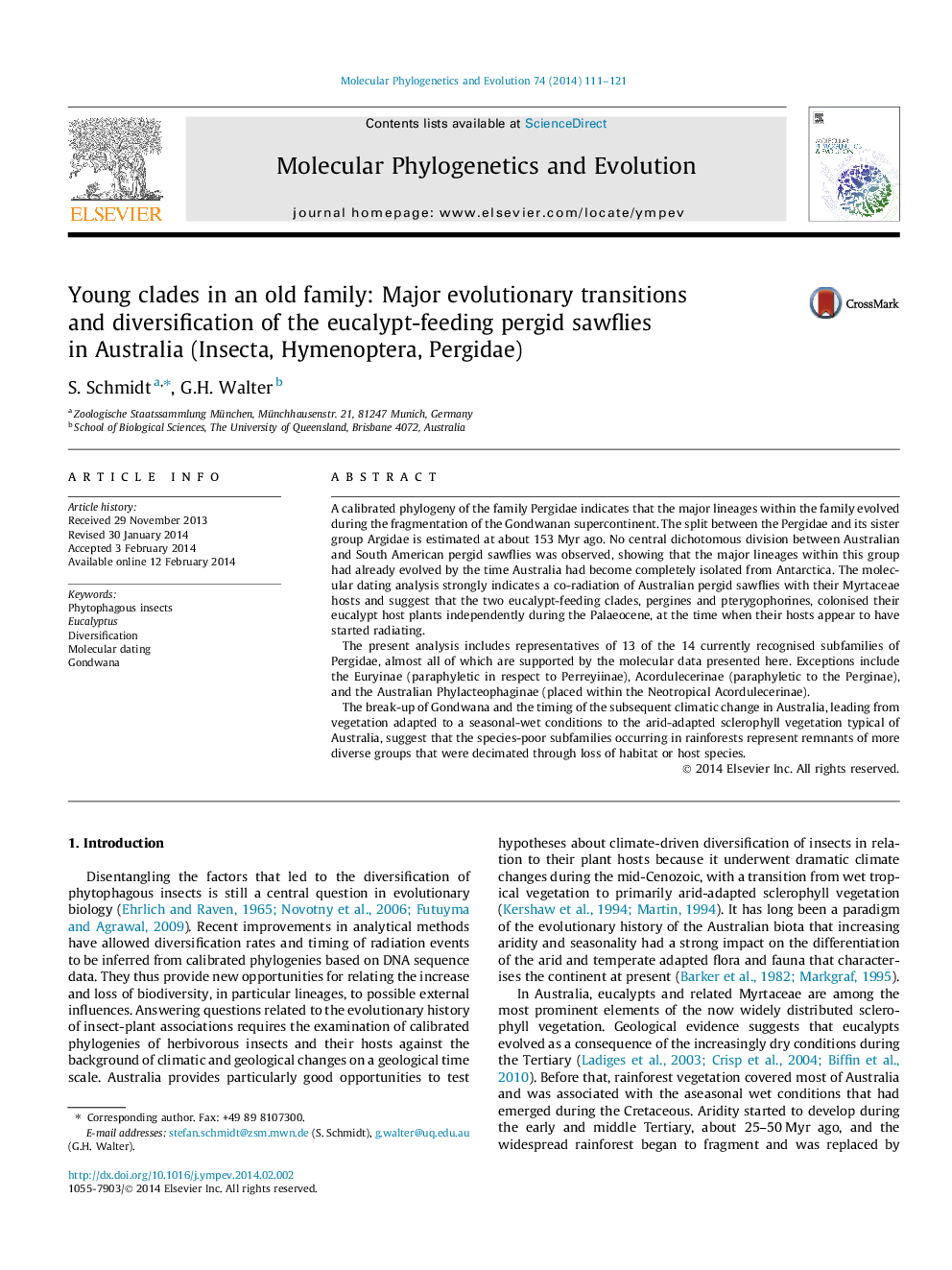| کد مقاله | کد نشریه | سال انتشار | مقاله انگلیسی | نسخه تمام متن |
|---|---|---|---|---|
| 2833852 | 1570821 | 2014 | 11 صفحه PDF | دانلود رایگان |

• The first comprehensive phylogeny of the sawfly family Pergidae is presented.
• We examined how some pergid subfamilies shifted to myrtaceous host plants.
• Molecular dating indicates a co-radiation with myrtaceous host plants.
• Two eucalypt-feeding pergid clades colonised their hosts during the Palaeocene.
• Australian rainforest pergids may have been decimated through loss of habitat.
A calibrated phylogeny of the family Pergidae indicates that the major lineages within the family evolved during the fragmentation of the Gondwanan supercontinent. The split between the Pergidae and its sister group Argidae is estimated at about 153 Myr ago. No central dichotomous division between Australian and South American pergid sawflies was observed, showing that the major lineages within this group had already evolved by the time Australia had become completely isolated from Antarctica. The molecular dating analysis strongly indicates a co-radiation of Australian pergid sawflies with their Myrtaceae hosts and suggest that the two eucalypt-feeding clades, pergines and pterygophorines, colonised their eucalypt host plants independently during the Palaeocene, at the time when their hosts appear to have started radiating.The present analysis includes representatives of 13 of the 14 currently recognised subfamilies of Pergidae, almost all of which are supported by the molecular data presented here. Exceptions include the Euryinae (paraphyletic in respect to Perreyiinae), Acordulecerinae (paraphyletic to the Perginae), and the Australian Phylacteophaginae (placed within the Neotropical Acordulecerinae).The break-up of Gondwana and the timing of the subsequent climatic change in Australia, leading from vegetation adapted to a seasonal-wet conditions to the arid-adapted sclerophyll vegetation typical of Australia, suggest that the species-poor subfamilies occurring in rainforests represent remnants of more diverse groups that were decimated through loss of habitat or host species.
Figure optionsDownload as PowerPoint slide
Journal: Molecular Phylogenetics and Evolution - Volume 74, May 2014, Pages 111–121